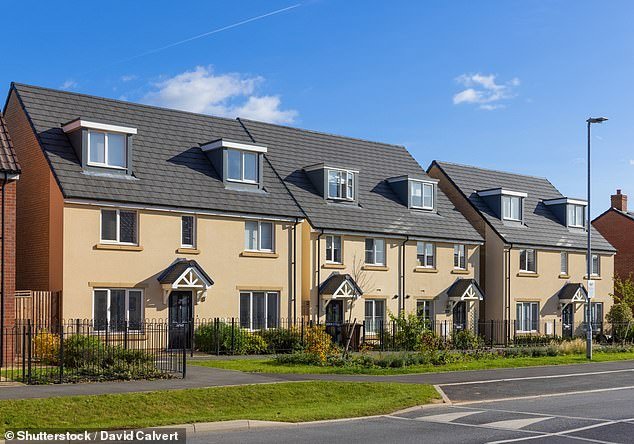Britons with mortgages favour two-year fixed rate deals, new data shows – but one expert says they may be making a mistake by not locking in their rate for longer.
Between April and June this year half of new mortgages were on two-year fixes, with only 36 per cent opting for five-year deals, according to the Bank of England.
The remainder of borrowers opted for variable rates such as trackers, or other fixed-rate terms such as three or even 10 years.
It marks a shift from 2022, when interest rates started rising. Then, buyers preferred five-year fixes because they believed this would allow them to keep their payments cheaper for longer.
Today, borrowers may think mortgage rates are on a downward trajectory given expectations that interest rates will be cut by the Bank of England.
However, experts say that may not be the case, meaning that opting for a longer mortgage deal is worth considering.

Borrowers continue to favour two-year fixed rate mortgages when forecasts suggest rates are unlikely to get much better
What will happen to mortgage rates?
Some borrowers may be hoping for a return to the rock bottom interest rate environment enjoyed prior to 2022, when mortgage rates even dipped below 1 per cent – though experts say this is highly improbable.
Peter Simson, director of mortgages at MPowered, said: ‘There is unfortunately almost a “muscle memory mindset issue” with rates.
‘People think that they will continue to fall – potentially back to the super low interest rates we saw prior to 2023.
‘Not only was this not healthy for the housing market, it is also extremely unlikely.’
Inflation isn’t falling as quickly as the Bank of England had hoped, and is predicted to have risen from 3.8 per cent in August to 4 per cent in September.
This means the base rate is unlikely to fall, either, which impacts mortgage rates.
At present market forecasts suggest the base rate won’t fall again until February next year, when it is set to reduce by 0.25 percentage points. This, the forecasts say, will be followed by a further cut in the summer.
That would see interest rates falling from 4 per cent to 3.5 per cent by this time next year.
However, these same forecasts suggest that 3.5 per cent is likely to be as good as it gets. And even if interest rates do fall as expected, it is unlikely to have an immediate impact on fixed rate mortgage pricing.

As good as it gets? Peter Stimson of MPowered Mortgages mortgage rates may be as low as they’re going to get right now
Eamonn Prendergast, chartered financial adviser at Bromley-based Palantir Financial Planning, told the news agency Newspage: ‘Until inflation starts easing decisively, the Bank of England will struggle to justify cutting rates meaning higher borrowing costs will linger longer for households and businesses.
‘Savers may benefit marginally, but for mortgage holders and small firms, the pressure is far from over.’
This means that those coming off two-year fixed mortgages may not see rates much cheaper than they are today.
The price of fixed mortgages is influenced by Sonia swap rates – the inter-bank lending rates which are based on expectations of where rates will be in the future.
Sonia swaps over two and five years are currently below the Bank of England base rate. This means mortgage rates are already being priced with future interest rate cuts factored in.
It is why the cheapest two-year fix on offer is currently 3.82 per cent, whereas the Bank of England base rate is 4 per cent.
As of 21 October, two-year Sonia swaps are at 3.57 per cent and five-year swaps are at 3.62 per cent.
Prior to interest rates rocketing in 2022, the margin between the lowest fixed rates and the equivalent swaps was closer to 1 percentage point, rather than the 0.25 percentage point gap we see today.
This means that based on the current trajectory, mortgage rates today could be as good as they will get for some time, unless future interest rate expectations change.
Some experts are therefore concerned that borrowers could be making a mistake by opting for short term fixed rates.
‘Growing numbers of households have been fixing for two years when the data suggests they should be looking at longer term options, given that we are approaching the bottom of the interest rate cycle,’ said Stimson.
‘Fixed rate mortgages are priced using interest rate swaps which take into consideration future cuts to the Bank of England base rate.
‘With a further two cuts already priced into the swap curve, it is possible mortgage rates are now as close to the bottom as they are going to get.’
Stimson warns that interest rates could even move higher in the future, meaning households fixing for two years in 2025 could face a nasty shock when they come to remortgage in 2027.
‘There is a considerable amount of uncertainty around, not only inflation and general economic trends, which could determine the future direction of rates, but the potential impact Rachel Reeves’ Budget announcements will have on the financial markets,’ he said.

